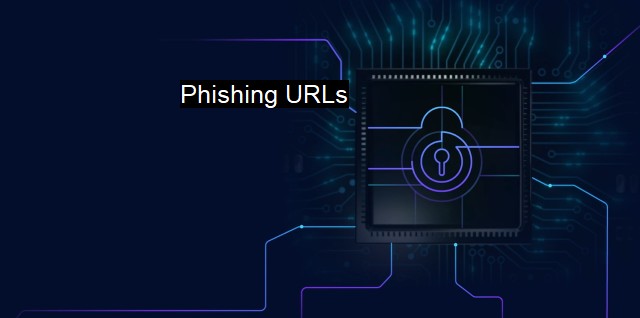What are Phishing URLs?
Phishing URLs: Protecting Yourself from Cybercriminals with Effective Antivirus Measures
Phishing URLs are unpleasant realities of the modern cybersecurity landscape. Incentivized by social engineering, financial gains, and ambiguous internet legislations, cybercriminals resort to phishing URLs to coerce unaware individuals into revealing their sensitive data.To understand phishing URLs, it's crucial to know about phishing first. Phishing is one of the most enduring methods of cyberattacks and generally hinges on impersonation. A cybercriminal pretends to represent credible entities, such as a renowned organization, a web-service provider, or a remote coworker. They persuade the victim to share confidential information, such as credit card details, login credentials, or social security numbers, usually under the guise of policy upgrades, security checks, or work directives.
Phishing URLs step up this manipulation by anchoring it in a technological warp. URLs or Uniform Resource Locifiers typically indicate the address of web resources. Phishing URLs appear identical to legitimate URLs but lead users to fraudulent websites. Though seeming familiar, these rogue sites are designed to mimic authentic ones popular among general users. They mechanically enable the ‘phisher’ to take unwary victims in confident stride, operating under the pretense that they are safe within the realm of their frequently visited websites.
Cybersecurity threats from phishing URLs are not limited to email scams. They abound across social media platforms, resources sharing networks, and could even lurk in plain sight via advertisements or pop-ups on otherwise secure websites. They can also surface indirectly through downloadable contents that, once clicked or installed, reroute users to these illegitimate sites.
Phishing URLs differ subtly from their legitimate counterparts, and such indications range from typographical errors to incongruities in protocol, subdomain, or domain structure. Users can also unknowingly activate embedded scripts on phishing urls that record keystrokes, capturing sensitive information as they type.
Phishing URLs are exponentially more dangerous due to the evolution of Advanced Persistent Threat (APT) vectors. These sophisticated cyber-attacks operate covertly over extended periods, resulting in crippling damage before detection. Phishing URLs serve as effective gateways for their inception, making their mitigation a top priority in cybersecurity strategy.
To combat these risks, individuals and businesses must prioritize cybersecurity hygiene. They should remain skeptical of unsolicited requests for sensitive information. Awareness is pivotal: employee education about phishing tactics can drastically decrease an organization's vulnerability to such scams.
Best practices in cybersecurity encourage protecting networks with robust firewalls and regularly updating them. Employers should facilitate the use of strong, unique passwords coupled with multi-factor authentication. equipping your system with modern antivirus software helps detect and restrict suspicious activities and malicious programs before they infiltrate the network.
Many browsers, network security appliances, and email gateways utilise URL filtering to block access to known phishing URLs. Anti-phishing toolbars and plugins provide an added layer of protection by detecting and alerting users about possibly fraudulent websites.
As phishing URLs continue to improve in subtlety and sophistication, technology alone will be insufficient to stave off all threats. Strong security protocols need to be complemented by proactive monitoring, prompt incident response, and personal diligence in the ongoing fight against cyber threats.
By understanding what phishing URLs are and the risk they carry, you arm yourself better against cyber threats that could potentially damage your personal and professional life. Aggressive awareness, education, and practicing vigilant online behaviour combined with efficient cybersecurity protocols and timely upgrades are integral methods of shielding against phishing URLs.

Phishing URLs FAQs
What is a phishing URL?
A phishing URL is a fake website that is designed to look like a legitimate site in order to trick users into giving away their sensitive information, such as login credentials or credit card numbers.How can I identify a phishing URL?
Phishing URLs often contain misspellings or variations of legitimate domain names, and may also use URLs that contain IP addresses instead of domain names. Additionally, phishing URLs may have URLs that contain extra subdomains, paths or parameters.What should I do if I encounter a phishing URL?
If you encounter a phishing URL, do not enter any personal information on the website. Instead, report the URL to the website owner or to your internet service provider. You can also use antivirus software to scan your computer and prevent further attacks.How can I protect myself from phishing URLs?
You can protect yourself from phishing URLs by being cautious about clicking on links in emails or messages, and by ensuring that your antivirus software is up-to-date. You can also check the URL of a website before entering any sensitive information, and use a password manager to generate and store strong passwords.| | A | | | B | | | C | | | D | | | E | | | F | | | G | | | H | | | I | | | J | | | K | | | L | | | M | |
| | N | | | O | | | P | | | Q | | | R | | | S | | | T | | | U | | | V | | | W | | | X | | | Y | | | Z | |
| | 1 | | | 2 | | | 3 | | | 4 | | | 7 | | | 8 | | |||||||